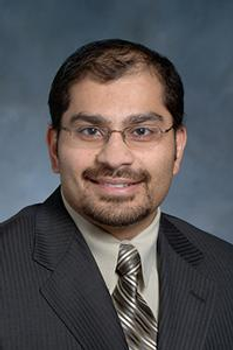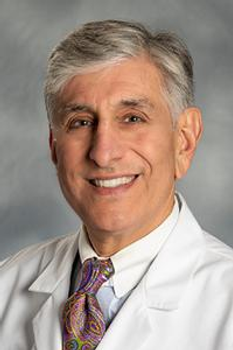Otosclerosis Overview
Learn About Otosclerosis
Otosclerosis is an abnormal bone growth in the middle ear that causes hearing loss.
Otospongiosis; Hearing loss - otosclerosis
The exact cause of otosclerosis is unknown. It may be passed down through families.
People who have otosclerosis have an abnormal extension of sponge-like bone growing in the middle ear cavity. This growth prevents the ear bones from vibrating normally in response to sound waves. These vibrations are needed in order for you to hear.
Otosclerosis is the most common cause of middle ear hearing loss in young adults. It typically begins in early to mid-adulthood. It is more common in women than in men. The condition may affect one or both ears.
Risks for this condition include pregnancy and a family history of hearing loss. White people are more likely to develop this condition than people of other races.
Symptoms include:
- Hearing loss (slow at first, but worsens over time)
- Ringing in the affected ear (tinnitus)
- Vertigo or dizziness
Otosclerosis may slowly get worse. The condition may not need to be treated until you have more serious hearing problems.
Using some medicines such as fluoride, calcium, or vitamin D may help to slow the hearing loss. However, the benefits of these treatments have not yet been proven.
A hearing aid may be used to treat the hearing loss. This will not cure or prevent hearing loss from getting worse, but it may help with symptoms.
Surgery can cure or improve conductive hearing loss. Either all or part of one of the small middle ear bones behind the eardrum (stapes) is removed and replaced with a prosthesis.
- A total replacement is called a stapedectomy.
- Sometimes only part of the stapes is removed and a small hole is made in the bottom of it. This is called a stapedotomy. Sometimes a laser is used to help with the surgery.
Michigan Ear Institute
Seilesh Babu is an Otolaryngologist in Farmington Hills, Michigan. Dr. Babu has been practicing medicine for over 29 years and is rated as an Elite provider by MediFind in the treatment of Otosclerosis. His top areas of expertise are Acoustic Neuroma, Schwannoma, Familial Otosclerosis, Stapedectomy, and Mastoidectomy. Dr. Babu is currently accepting new patients.
Michigan Ear Institute
Dennis Bojrab is an Otolaryngologist in Farmington Hills, Michigan. Dr. Bojrab has been practicing medicine for over 47 years and is rated as an Elite provider by MediFind in the treatment of Otosclerosis. His top areas of expertise are Acoustic Neuroma, Schwannoma, Otosclerosis, Stapedectomy, and Mastoidectomy. Dr. Bojrab is currently accepting new patients.
Atrius Health Inc
Alicia Quesnel is an Otolaryngologist in Boston, Massachusetts. Dr. Quesnel is rated as an Elite provider by MediFind in the treatment of Otosclerosis. Her top areas of expertise are Otosclerosis, Familial Otosclerosis, Otitis, Mastoidectomy, and Stapedectomy. Dr. Quesnel is currently accepting new patients.
Otosclerosis gets worse without treatment. Surgery can restore some or all of your hearing loss. Pain and dizziness from the surgery go away within a few weeks for most people.
To reduce the risk of complications after surgery:
- DO NOT blow your nose for 2 to 3 weeks after surgery.
- Avoid people with respiratory or other infections.
- Avoid bending, lifting, or straining, which may cause dizziness.
- Avoid loud noises or sudden pressure changes, such as scuba diving, flying, or driving in the mountains until you have healed.
If surgery does not work, you may have total hearing loss. Treatment for total hearing loss involves developing skills to cope with deafness, and using hearing aids to transmit sounds from the non-hearing ear to the good ear.
Complications may include:
- Complete deafness
- Abnormal taste in the mouth or loss of taste to part of the tongue, temporary or permanent
- Infection, dizziness, pain, or a blood clot in the ear after surgery
- Nerve damage
Contact your health care provider if:
- You have hearing loss
- You develop fever, ear pain, dizziness, or other symptoms after surgery
Summary: Our studies will systematically investigate and establish evidence on whether Cone-beam computed tomography (CBCT) of the temporal bone could be used in the diagnosis and treatment of otosclerosis and in the post-operative follow-up after stapedotomy.
Summary: The goal of this observational case-control study is to evaluate the relationship between temporal bone computed tomography (CT) findings, bone mineral density (BMD), and audiological parameters in adults diagnosed with otosclerosis. The main questions it aims to answer are: Is there a correlation between temporal bone CT density values and the severity of hearing loss in otosclerosis? Do bone min...
Published Date: May 02, 2024
Published By: Josef Shargorodsky, MD, MPH, Johns Hopkins University School of Medicine, Baltimore, MD. Also reviewed by David C. Dugdale, MD, Medical Director, Brenda Conaway, Editorial Director, and the A.D.A.M. Editorial team.
House JW, Cunningham CD. Otosclerosis. In: Flint PW, Francis HW, Haughey BH, et al, eds. Cummings Otolaryngology: Head and Neck Surgery. 7th ed. Philadelphia, PA: Elsevier; 2021:chap 146.
Ironside JW, Smith C. Central and peripheral nervous systems. In: Cross SS, ed. Underwood Pathology. 7th ed. Philadelphia, PA: Elsevier; 2019:chap 26.
O'Handley JG, Tobin EJ, Shah AR. Otorhinolaryngology. In: Rakel RE, Rakel DP, eds. Textbook of Family Medicine. 9th ed. Philadelphia, PA: Elsevier; 2016:chap 18.
Rivero A, Yoshikawa N. Otosclerosis. In: Myers EN, Snyderman CH, eds. Operative Otolaryngology Head and Neck Surgery. 3rd ed. Philadelphia, PA: Elsevier; 2018:chap 133.

